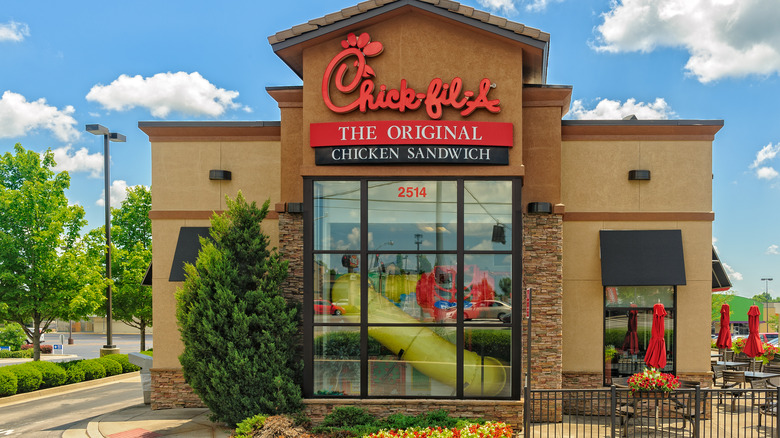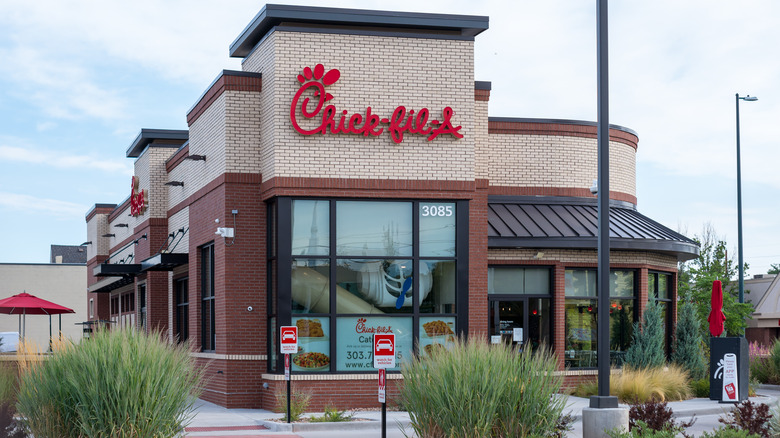The Big Difference Between Newer And Older Chick-Fil-A Restaurants
With 2,723 locations in 48 states (via ScrapeHero), Chick-fil-A is one of America's most popular fast-food restaurants (via QSR magazine). Founded in 1946 and expanding throughout mall food courts in the 1960s and '70s (via Business Insider), the chain is still building new restaurants at the rate of 100 per year.
The Atlanta-based company announced a commitment two years ago to construct its future restaurants in a greener way. According to Chick-fil-A's blog, The Chicken Wire, guests won't be able to detect most of the sustainable initiatives, but they are there.
One of the biggest changes in recently built Chick-fil-A restaurants lies in the construction process. Its new plan reduces waste during building. According to Chick-fil-A, eliminating waste is important to the overall sustainability initiatives because construction waste is a major contributor to landfills. The blog cites the website Construction & Demolition Recycling, which estimates that U.S. annual construction waste will reach an astounding 2.2 billion tons by 2025. Chick-fil-A noted they don't want to contribute to the landfills more than necessary.
Jeff Shaw, principle construction lead for Chick-fil-A's southwestern operations, told The Chicken Wire that innovations in commercial real estate design and construction have allowed the company to make environmentally impactful changes. He said Chick-fil-A's goal is not only to become more sustainable, but to lead and influence the way other brands build restaurants. "We knew that we had a unique opportunity to deliver a quality structure and a positive experience while reducing waste and costs," he explained.
Chick-fil-A is borrowing construction principles from the auto industry
Specifically, one way Chick-fil-A is making new restaurant construction greener is the use of an "industrialized construction approach to the design." This means constructing whole sections of each restaurant off-site to save time and resources. A bonus is that the construction is more consistent and of higher quality.
Another process, called "lean construction," borrows efficient construction principles from, interestingly, the automotive industry. Chick-fil-A described these as "best practices" that conserve time and energy as well as fuel used in transporting construction materials to job sites. The newly adopted methods also create "smarter" construction, as teams are able to "be more intentional with resources and comply with LEED (Leadership in Energy and Environmental Design) certification volume standards," according to The Chicken Wire.
Chick-fil-A's Restaurant Development Team reported that results of the initiatives have included a 50% reduction in construction waste.
Not only are new restaurants built in a more sustainable way, but Chick-fil-A is also making existing restaurants more sustainable as these locations undergo renovations. These updates include making the restaurants more energy and water efficient.
Chick-fil-A stated that more than 300 professionals contribute to the design and construction of each new restaurant. They work collaboratively, noted the corporation, to "implement sustainable practices from the ground up."

